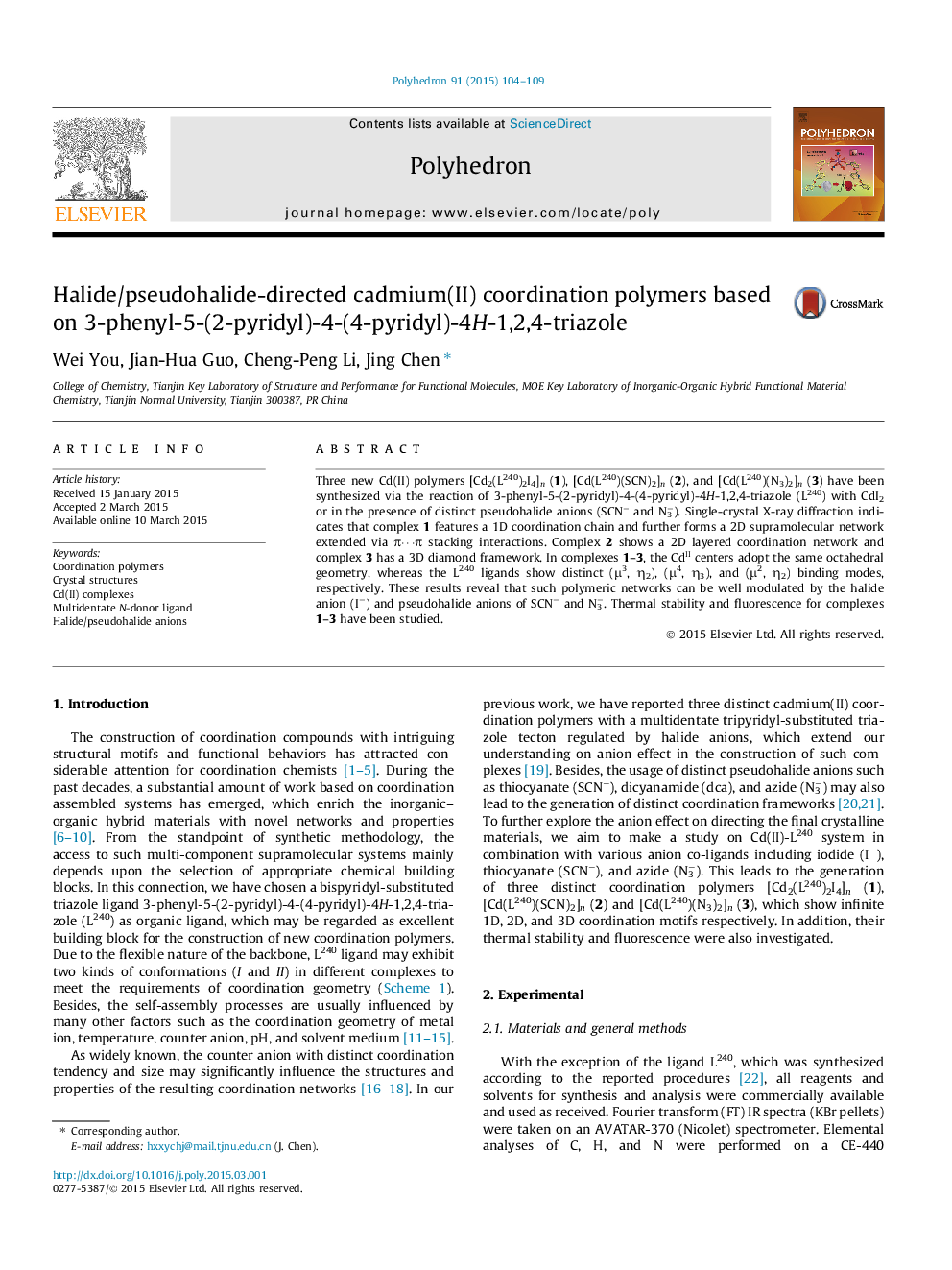| Article ID | Journal | Published Year | Pages | File Type |
|---|---|---|---|---|
| 1335233 | Polyhedron | 2015 | 6 Pages |
Three new Cd(II) polymers [Cd2(L240)2I4]n (1), [Cd(L240)(SCN)2]n (2), and [Cd(L240)(N3)2]n (3) have been synthesized via the reaction of 3-phenyl-5-(2-pyridyl)-4-(4-pyridyl)-4H-1,2,4-triazole (L240) with CdI2 or in the presence of distinct pseudohalide anions (SCN− and N3−). Single-crystal X-ray diffraction indicates that complex 1 features a 1D coordination chain and further forms a 2D supramolecular network extended via π⋯π stacking interactions. Complex 2 shows a 2D layered coordination network and complex 3 has a 3D diamond framework. In complexes 1–3, the CdII centers adopt the same octahedral geometry, whereas the L240 ligands show distinct (μ3, η2), (μ4, η3), and (μ2, η2) binding modes, respectively. These results reveal that such polymeric networks can be well modulated by the halide anion (I−) and pseudohalide anions of SCN− and N3−. Thermal stability and fluorescence for complexes 1–3 have been studied.
Graphical abstractThree new Cd(II) polymers [Cd2(L240)2I4]n (1), [Cd(L240)(SCN)2]n (2), and [Cd(L240)(N3)2]n (3) have been synthesized via the assemblies of 3-phenyl-5-(2-pyridyl)-4-(4-pyridyl)-4H-1,2,4-triazole (L240) with CdI2 or in the presence of SCN− and N3− as auxiliary ligands. These complexes show distinct 1D, 2D, and 3D coordination architectures respectively, the result of which indicates that the higher-dimensionality materials can be preferably obtained with pseudohalide anions as co-ligand.Figure optionsDownload full-size imageDownload as PowerPoint slide
